The Howell Living History farm is unique—there are many museums, villages, and farms that offer “living history” demonstrations. You can go to them and enjoy watching what life was like in the early days of America. However, at Howell, you not only get to see what life was like, you get to experience it. In fact, if you’re just watching, someone might ask you to help them! This is terrific, because I’d rather experience history than observe it. When I went, the farm was doing its annual wheat harvest, complete with a McCormick reaper/binder and a team of horses. The public (including my group) where encouraged to help shock the sheaves of cut wheat. There was also a blacksmith hammering away (and helping the children make S-hooks)—very cool! And, another fun thing about the farm: it’s perfectly free, although there are opportunities to buy products at the gift shop, purchase lunch at the farmhouse, or buy the materials to make a children’s project. I love that you can choose what you want to pay for!
Getting to Howell Living History Farm
To get to the farm, from I-78 take Exit 29 to I-287 South. After 3.8 miles, take Exit 17 onto US-202 South towards Somerville and Flemington. Drive 14.8 miles. At the traffic circle, take the third exit to stay on US-202 South. Drive another 4.6 miles, then take a slight right onto NJ-179 South (Old York Road) and continue to follow NJ-179 South for 7 miles, at which point you’ll be in the town of Lambertville. Here NJ-179 South turns right; you want to continue straight onto Route 165 for 0.3 miles then go slightly right to go onto NJ-29 South. Follow this road for 2.2 miles—it’s one of the nicest parts of the drive, since you’re following the Delaware River and the Delaware and Raritan Canal—the canal has a towpath that many bikers, joggers, and walkers use. I’ve biked on it a couple of times, and it’s very nice. After 2.2 miles, turn left onto Valley Road and drive 1.4 miles. Then turn left onto Woodens Lane; you’ll see a large barn and the gift shop. Park in the parking area.
If you’re coming from the Trenton area (I-95), take Exit 1 onto River Road (NJ-29 North). Drive 6 miles. You’ll be following the Delaware River all of the time you’re on NJ-29 North, which makes for a nice drive. Turn right onto Pleasant Valley Road, and drive 1.3 miles to Valley Road. Turn left. Take the first right onto Woodens Lane, you’ll be in the parking lot before you know it. If you have a GPS, the address of the farm is 70 Woodens Ln, Lambertville, NJ 08530.
From the parking area, follow the dirt road past the picnic area as it twists around the back of the barn and gift shop buildings. No private vehicles are allowed past the parking area, but if you can’t make the ¼-mile walk, park staff will drive you up on a golf cart (at least on Saturdays). Follow the road across the bridge, past the beehive, and then up the hill toward the farm buildings. You’ll be walking between fields that sometimes have animals in them. The farm is run just like one was in the 1890s (mostly—I did see a very modern-looking refrigerator!), so all the animals are from that time-period. At the visitor center (gift shop) you can pick up a map of the farm that will tell you about the different buildings, bee hives, fields, etc., you can see along the way. This is helpful, even if it’s not as detailed as it might be. Also, not all the buildings, etc., are numbered, so it might be helpful if you ask one of the period-costumed interpreters about the buildings that don’t have numbers.
Once you come up to the farm buildings, follow the map to look at the different farm buildings. Often, there are sheep in the pen to the right of the farmhouse, and there are also chickens and horses, and maybe some cows and pigs, in the farm buildings. On the day we visited, a blacksmith had set up his forge in the Equipment Shed. Apparently, he’s there fairly often on Saturdays. In fact, very little happens on the farm on days other than Saturday. We visited once on a weekday, and the farm was almost dead; there was very little happening (besides a couple of people in period costume). If you’re planning on seeing the farm in action, or helping out, you definitely want to go on a Saturday. You can get a schedule of events off of the Howell Living History Farm website, http://www.howellfarm.org/ (Calendar of Yearly Events).
As I said in the introduction, one of the things I like about Howell is that the interpreters like you helping them. You get the impression that they enjoy teaching people to live in a historical way, not just interpreting the past to visitors. On the day we visited, the farm hands were harvesting wheat in the field down the hill and across the road from the farm buildings. One man was running a McCormick reaper/binder with a team of three horses.
According to a historian who we were talking to in the field, the reaper/binder was a revolutionary invention because it not only cut the grain, but it had a mechanical knot tier so it also put the grain into a sheaf. The man who made it worked for years to get the binder to work and even had to negotiate with a twine-making company to make an inferior product—after all, what company in their right mind would put their company on the line by making an inferior product that wouldn’t last very long? That company, though, was very happy they agreed to the inventor’s plans: they made a fortune by mass producing the first baling twine. However, after the new twine was made, the inventor had to make the machine workable with it. Once the invention was done, farmers loved it. Instead of needing dozens of men working hard to sickle the grain, gather it into sheaves, and then shock it (or to run the reaping machine, gather into sheaves, and then shock it), one man could run the machine and bind it into sheaves. Shocking the wheat was then a doable job by the farm hands. The machines were expensive, but several farmers might buy one together, or a well-to-do farmer might buy one, and then the farmers would barter with him to use it on their own fields.
My favorite part of the day came when the historian asked us to help him shock some of the bundles of wheat that the reaper/binder had left behind. You take four sheaves of wheat, and stand them upright in a square. Then, you take four more sheaves and put them at the four corners. Finally, you place two sheaves on top to help the rain run off and down the sides of the wheat instead of into it. I’m guessing we shocked about 250 sheaves before we headed back up towards the farm buildings, where one of the members of our group was waiting for us and watching the harvesting. It was a lot of fun to see how the wheat was shocked and to actually do it ourselves—there’s nothing like experiencing something to learn about it really well! You can see a video I and another member of my group took of the reaper-binder below.
Another fun part of the day was helping the blacksmith. He had been working on a spit in the morning, but in the afternoon he was helping some of the children make pretty S-hooks (perfect for hanging a flowering basket). He’d get a metal rod end red-hot in the fire, then let them hammer it into a point. Then he’d get it hot again, and the children could hammer it into a hook shape. (He was very safety conscious and had all the children wear eye protection. He held the rod so that they wouldn’t burn themselves, and insisted that the children be a certain age before he’d let them use the hammer.) After they had done this to both ends of the rod, he’d get the middle red-hot and then he and the child would turn the rod to make a pretty twist in the hook. It turned out very nicely.
Speaking of children, on Saturdays there are also quite a few activities for children. There’s almost always an activity for children (with a materials fee, usually $2-5). There are also free games that children of different ages (and even adults) can take part in. I very nearly won the barrel hoop race, but my hoop did a wild curve when it hit another contestant’s fallen hoop!
There is also food for sale (it’s not cheap—think $3+ for a hamburger). At times, there are special foods for sale. For example, the day we visited they were selling home-cranked ice cream ($3.50 for a heafty ice cream sundae or a root beer float). Other foods and crafts for sale are available throughout the year.
The bottom line of Howell Living History Farm is that if the event of the Saturday is interesting to you, definitely go. It’s a peaceful farm with great interpreters who love to let the public experience history first-hand.
Round Trip Trail Length: About ½ mile
Facilities: None up at the farm, restrooms in the parking area
Fees: None unless you’re buying food or materials for the children’s crafts
Don’t forget to “Like” me out on Facebook! http://www.facebook.com/pages/Annes-Travels/145111022280743
Trail 




Road 




Signs 




Scenery 




Would I go 100 miles out of my way for this? 




Overall Rating: 




This Week’s Featured Product!
This is a look at America’s history before 1840. In it, you can find over 300 living history destinations all over the US…those who use the book often comment that they didn’t know how close some of these destinations are to where they live. It is a must-have for those who want to visit living history destinations and those who want to learn about specific time periods or people groups in US history.

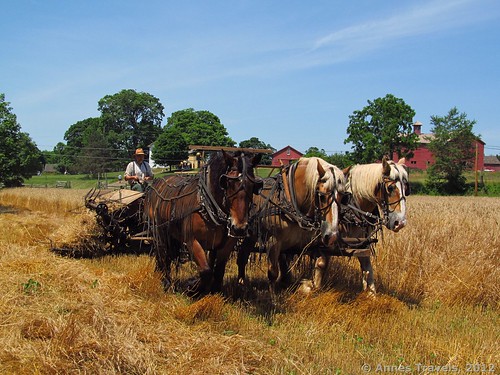
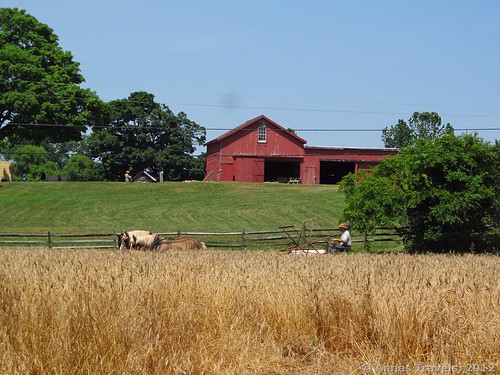

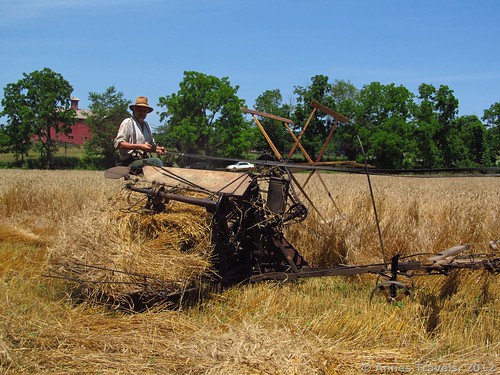
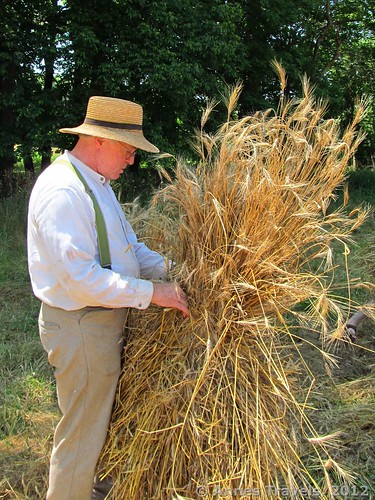
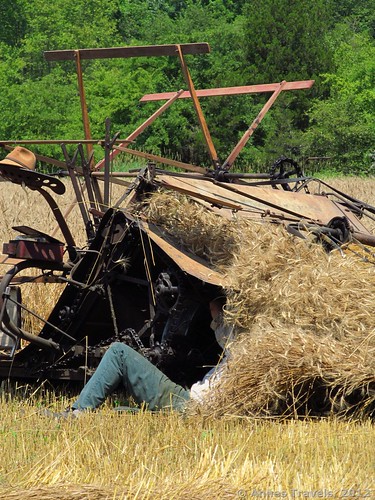
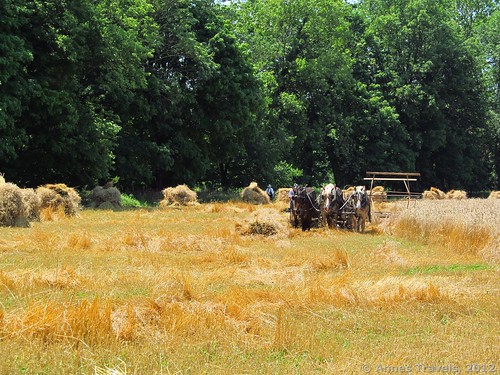

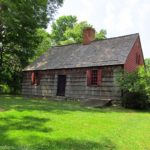
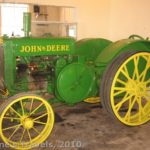
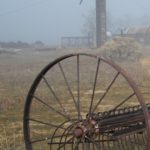
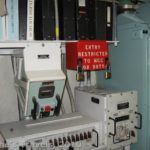
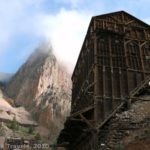

I am surprised by the wisdom in this blog post I found it to be not just extremely motivating but it really also made me think. It is hard now a days to get relevant information to ones search, so I’m happy that I found this article post
Pingback: 10 of the Best Free Historical Sites in America - Anne's Travels